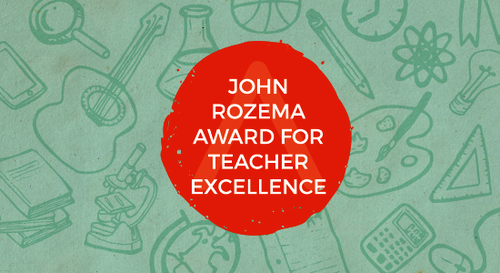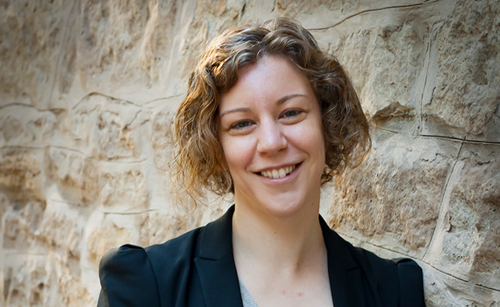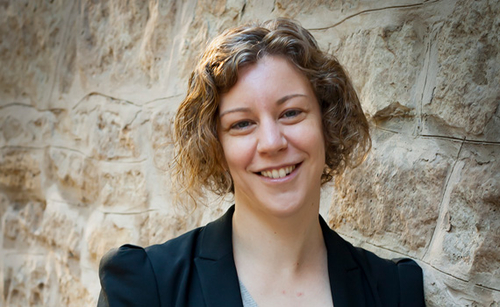Cardus Hosts John Rozema Education Awards June 9, 2016 BURLINGTON—Cardus President and CEO Michael Van Pelt has announced winners of the first-ever John Rozema Awards for Teacher Excellence at Ontario Independent Christian Schools. Van Pelt and John Rozema, in partnership with the Christian School Foundation, presented the awards June 9 2016 at a reception in the Royal Botanical Gardens at Burlington, Ontario. Seven teachers were celebrated for their contributions to the Christian vision of their schools and to the flourishing of the community. Kasia Konstanty, Eric Brink, Richie VanderWier, Jonathan Devries, and Harry Blyleven, from Hamilton District Christian High School, were presented the group award. Lisa Eelkema, of Laurentian Hills Christian High School, won the elementary teaching award. David Robinson, of Toronto District Christian High School, took home the secondary school award. "The quality of all the nominees, the strength of the candidates on the shortlist, and the superb professionalism of the winners all attest to a very bright future for top quality Christian education," Van Pelt said following the awards. "As a Canadian think tank dedicated to renewing North American social architecture, Cardus is delighted to be a partner in a process that both rewards and showcases the best of what Christian schools can offer students, the education system, and the wider community." Dr. Beth Green, program director for Cardus Education, emphasized the uniqueness of the John Rozema Award in using rigorous data assessment to identify the winners from the teachers nominated by their respective schools. "I'm proud our standards are so exacting," Dr. Green said in her remarks at the awards ceremony. "To lend Cardus's and John Rozema's name to this shortlist is to identify with a group of educators, to point to them and say: 'Imitate these teachers, they are going to keep growing, they are going to keep pursuing education that is excellent and that will support the next generation in Canada to flourish.'" Of the five group winners from Hamilton District Christian High School, principal Nathan Siebenga noted they "exploded the grade 9 timetable to deliver an innovative design block course that worked across curriculum disciplines . . . and stretch beyond what many would consider a 'normal' classroom." To win the Elementary Award, Lisa Elkema made careful use of data and assessment to stimulate her young students to present urban planning ideas to city councillors, partner with adults in the local community in an analysis of dystopian literature, and write editorials critiquing local and global responses to natural disasters. In the Secondary Award category, David Robinson's leadership let his students experience education beyond the classroom walls, and even beyond the hallways and doors of the school. The students built and installed sound proofing panels for the school building, designed Lego robots and ventured into Algonquin Park to deepen their learning experiences. The awards are named for and sponsored by Sarnia business leader John Rozema, esteemed for his commitment to both local and global issues, and for his support of institutions such as Sarnia Christian School. "I'm happy to be associated with recognizing this level of excellence in teaching," John Rozema said. "I'm delighted to join Cardus in celebrating the high calibre work being done in Ontario's Christian schools. -30- Media interviews can be arranged through: Beth Green bgreen@cardus.ca 905-528-8866 x35

Cardus Hosts John Rozema Education Awards
June 9, 2016

Hope Comes Home: 2016 Cardus Federal Budget Analysis
Green is the new gold. And the first federal Liberal budget is as much a directive to "grow green" as it is a plan for the country's financial future. If Ottawa's spending is set to skyrocket into a green house gas free stratosphere, it's justified as way to restore middle-class optimism by creating good jobs in clean cities with properly functioning physical infrastructure. Finance Minister Bill Morneau's title for the document is "Growing the Middle Class" (it might just as well have been called "Hope Comes Home") and there is no mistaking its intention to address a time of economic uncertainty for Canada. The energy sector continues to suffer as other resource sectors are also experiencing economic hardship. Morneau's documents note that the 30 to 40 per cent drop in oil and gas investment caused a "negative shock to the economy of $30 billion or more, equivalent to (a drop of) 1.5 per cent of nominal GDP." Alberta, the economic engine of Canada's resource sector, has cooled significantly resulting in 65,000 job losses since October 2014. In its 2016 economic forecast, the Conference Board of Canada looked south to a stronger US economy and the potential for greater trade, in part due to the slumping loonie. Canadians continue to struggle with record household debt, buoyed by low interest rates as concern remains regarding an overvalued housing market. True to their campaign promise, the government of Prime Minister Justin Trudeau has delivered a budget focused on deficit spending in hopes of stimulating the economy, rather than relying on simply tweaking monetary policies. In contrast to their promised $10 billion in deficit spending during the election campaign, however, the 2016 budget calls for a $29.6 billion deficit this year, 29 billion next year, and $14.3 billion in 2020-21. Overall, the federal government expects to spend $113.2 billion more than it raises during the next five years. The payoff for the first two years, according to the budget documents, will be 1.5 per cent growth in GDP translating into 100,000 jobs "created or maintained" by 2017-18. Ray Pennings | March 22, 2016 Much of that spending will be from delivery on significant promises such as the overhaul of the family benefits system and the new government's plan for infrastructure spending. And there is still plenty left over for making Canada greener than a seasick shamrock seller. Fully 18 pages of the budget itself are dedicated to a "Clean Growth Economy" that comprises everything from investing in clean technology to improving Great Lakes water quality and restoring trust in environmental assessment. Depending on how the pluses and minuses are calculated for programs spread over several budgetary envelopes, total new spending for greening Canada tops $3 billion. For example, the budget proposes that during the next four years, the government will spend $1 billion to support clean technology in primary industries such as forestry, fishing, mining, energy and agriculture. It will allocate another $130 million over five years for initiatives such as the Sustainable Development Technology Canada Tech Fund, and $82.5 million over two years for Natural Resources Canada to support research development and clean energy technologies. Another $62.5 million will be spent over two years to "support the deployment of infrastructure for alternative transportation fuels, including charging infrastructure for electric vehicles…." Atop that, $50 million will be spent over two years to reduce greenhouse gas emissions from the oil and gas sector. The list goes on. At Cardus, our analysis of these budgetary choices considers the government's spending mandate within the larger societal trends. Federal budget decisions are one part of a complex interplay between government and social institutions that build and enhance our social architecture. It's fair game to raise concern over what seems, at first blush, an exorbitant increase in dollars spent over money raised. But prudence also requires analysis of how such an approach affects the institutions that Cardus argues are critical to a healthy and vital Canadian society. Infrastructure spending and the city The federal government has committed $120 billion over 10 years for infrastructure spending, which the budget calls "an historic" investment to meet Canadian needs. The plan, to be rolled out in two phases, will seek to improve the lot of Canadians through everything from reducing urban traffic jams to making trade corridors more efficient to help our exporters. Phase 1 calls for $11.9 billion over five years, beginning immediately. The government pledges it will find new money to spend: $3.4 billion over three years for public transit improvements $5 billion over five years for wastewater and green infrastructure $3.4 billion over five years for such "social infrastructure" as affordable housing, child care centres and cultural/recreational facilities Another $12 billion in existing spending will continue. Phase 2 of the plan is left largely undefined and stretches out over eight years of a "broader and more ambitious" infrastructure plan that will "go hand in hand with the transition to a low-carbon economy" by improving the transportation networks in Canadian cities. Infrastructure spending impacts provinces and cities where the fruit of such commitments will be seen. There is little debate that Canada's infrastructure requires revitalization. The point of contention concerns the wisdom of running substantial deficits in order to pay for upgrades and new projects. And while the budget prescribes a revised formula concerning who pays how much for infrastructure, a larger opportunity has not been seized. Clearly the billions in infrastructure spending are as much about economic stimulus as about renewing infrastructure. In order to maximize the public benefit, physical infrastructure development must consider how it relates to social infrastructure—the relational patterns that give rise to the social fabric of our neighbourhoods and communities. Improved physical infrastructure can enhance our quality of life the most when its relationship to social capital and community institutions are clearly understood. At its worst, poorly envisioned physical infrastructure can perpetuate or increase social isolation and push community institutions to the margins. As program director of Cardus Social Cities Milton Friesen writes, "Changing a policy here and there or embarking on short-term patchwork interventions will be inadequate where the social fabric is getting thin." Advanced data collection can improve our ability to see and understand the patterns of individual and collective relationships that comprise our social infrastructure.Physical infrastructure renewal must consider our social infrastructures. While the budget does tip its hat to the need for "evidence-based" governance, there is a scarcity of detail in its pages about how the federal, provincial and municipal governments will effectively steward the environmental relationship between the physical and the social. Translating infrastructure spending into opportunity The federal government predicts that increased infrastructure funding will translate into new jobs. Not all qualified Canadians have access to public works, however. Provincial labour codes allow only some parties to bid on public projects. If the federal government wishes to invest in a manner that is transparent, fair, and open to all qualified Canadians, it should leverage its influence to encourage provinces to embrace open tendering for public works. Studies show closed tendering increases project cost from 10 per cent to as much as 40 per cent. Open tendering is both economically prudent and fair. Cardus Work and Economic program director Brian Dijkema writes, "Open tendering will provide the federal government with a tool to ensure that municipalities are accountable for making those federal funds stretch to the furthest extent possible. It contributes to an economic culture driven by competition among multiple labour pools chosen by workers—exactly the type of culture which leads to innovations which will increase value." For Canadians who have reached the end of their working lives, the government has fulfilled its promise to restore the retirement age to 65 years old. The previous government, citing cost cutting, had raised it to 67 starting in 2023. The Liberal government is also pledging $2.6 million a year to help retirement age couples who must live apart for reasons beyond their control, and are therefore at increased risk of living in poverty. Curiously, though, a budget built on ensuring middle-class comfort for as many Canadians as possible, the budget adds only a maximum of $947 a year to the amount for the vulnerable seniors reliant almost exclusively on Old Age Security and the Guaranteed Income Supplement. While the increase will require more than $670 million a year from the federal treasury, according to the budget, it will "improve the financial security of 900,000 single seniors across Canada" by a paltry $78 a month. Similarly, the new government's first budget falls short of the $775 million pledged for labour market development at a time when many Canadians, particularly in the energy producing provinces, have been thrown out of work. The 2016 budget proposes another $125 million for its Labour Market Development Agreements with the provinces and territories, and an additional $50 million for the Canada Job Fund Agreements. Certainly, those amounts are not trifles but are they enough to help in regions where the need to retrain to sustain reasonable living standards can be a matter of both individual and community survival? At the same time, the budget does promise greater vigilance to ensure tax fairness by closing what it calls loopholes for business owners that are not available to ordinary taxpayers. It will prevent business owners from using complex partnership and corporate structures to multiply eligibility for up to $500,000 in small business deductions. These and other measures are justifiable in the name of basic fairness and equity in the tax system, without which a health, sustainable social architecture is impossible. But, inexplicably, it defers promised further reductions in the small business income tax rate and cancels a capital gains exemption where cash proceeds for sale of corporate shares or real estate are donated to a registered charity within 30 days. Surely reduced taxes for small business are consistent with the government's laudable goal of rejuvenating Canada's middle class economy? And, as Cardus has argued consistently over the last number of years, disregard for the contribution of the charitable sector to Canada's well-being is short-sighted at best, and potentially extremely harmful it he long term. Family benefits and parental leave The federal government is creating a new Canada Child Benefit that will combine the existing Universal Child Care Benefit (UCCB), the Canada Child Tax Benefit (CCTB), and the National Child Benefit Supplement (NCBS) into a single, non-taxable benefit that is geared to income. To help pay for the $23 billion re-designed benefit, the federal government will cancel family taxation—also known as income splitting—for the 2016 and subsequent tax years. The new benefit is attractive for many families because it is streamlined, non-taxable and puts money back in the pockets of parents. Cancelling income splitting is unfortunate, however, as the policy decreased the tax burden on many families while acknowledging the reality that families function as an economic unit. Overall, the Canada Child Benefit should result in increased funds for most families. The government's claim in the budget is that nine out of 10 families will receive more in child benefits than under the current system. The budget also expresses a "commitment" to making compassionate care and parental leave benefits more flexible to better accommodate family and work circumstances. At the moment, though, the commitment is what one finance department official described as a "work in progress" and has no 2016 budget dollars attached. Again, this seems a case of curious neglect from a social architecture point of view. As Cardus Family program director Andrea Mrozek has written, making parental leave more flexible: "Sensitizes us to the reality that once a baby arrives, care does not stop at one year… When parental leave is over, there are few special accommodations for the needs of working parents. We should be angling for recognition of the power and importance of parenting by acknowledging the responsibilities parents have well past one year." Policy-makers should be reminded that parenting children, while difficult to put a monetary value on, enriches communities now and in the future. A robust family policy can enhance the parenting enterprise by maximizing choices for parents. Supporting natural caregivers at the end of life Likewise, the landscape in end of life care in Canada is undergoing a revolution. The new government will introduce legislation setting the framework for doctor-hastened death. At the same time, Canada is witnessing an increasing awareness of the significance of palliative care. The government had an opportunity to recognize the supporting role of natural caregivers in the end of life care continuum. It seems to have been otherwise occupied, which is not to its credit. Budgets that attempt to do as much as this one still cannot do everything, and that caveat must temper criticism of inaction on compassionate care. Still, it remains a pressing issue that warranted far more prompt attention. Currently the Compassionate Care Benefit is administered through Employment Insurance and provides up to 26 weeks of leave when a family member is gravely ill or at significant risk of dying. Equipping natural caregivers is good for patients and can reduce stress on acute care resources. When considering end-of-life care, public policy must consider the full range of social institutions connecting the range of options available to patients and their caregivers. Education If the 2016 financial plan is about green dreams for happy middle class Canadians in smartly repaired cities and towns, it's also about education from cradle to grave. While the budget almost petulantly cancels a tax credit offered by the former Conservative government for children's fitness and arts programs, it proposes instead up to $2 billion over three years for a new Post-Secondary Institutions Strategic Investment Fund. It also boosts by $95 million a year the amounts available to research granting councils such as: $30 million for the Canadian Institutes of Health Research $30 million for the Natural Sciences and Engineering Research Council $16 million for the Social Sciences and Humanities Research Council $19 million for the Research Support Fund that pays post-secondary institutions to undertake federally-sponsored research At the individual student level, the government is pledging a package of assistance programs that will cost $1.53 billion in 2016-17 and $329 million every year after that. The Canada Student Grant will increase to $3,000 from $2,000 for students from low-income families, up to $1,200 for middle-income families and up to $1,800 for part-time students. The budget says such measures will help about 247,000 low-income families, 100,000 middle-income students, and 16,000 part-time students complete their education. There is also a promise to create, during the next three years, a total of 105,000 additional jobs for young Canadians through the Canada Summer Jobs program. Beyond a better-educated citizenry and work force, though, the budget's goal is to restore what the government says is a lost sense of optimism among Canadians. As Finance Minister Moreau put it in his budget speech: "We act for our children and our children's children. We act so that they may inherit a more prosperous and more hopeful Canada." Of course, every action has an equal and opposite reaction, sometimes referred to as its price tag. In this case, the five-year projected cost is $113.2 billion that Canada does not have in its federal treasury. That is significantly more than Canadians were told during the election campaign that they would be on the hook for if the Liberals were elected. Still, voters took the risk of turning out the government they knew for a new government promising a brighter and more optimistic vision. Whether Canadians are left feeling green around the gills when the multi-billion dollar bills come due remains to be seen. Notes 1 While this contradicts Liberal campaign literature, a Liberal online calculator shows benefits up to approximately the $200,000 level of income. Employment and Social Development Canada did not respond to numerous requests for clarity. Retrieved online at https://www.liberal.ca/realchange/canada-child-benefit-plan/?shownew=1 2 A Liberal online calculator shows a family earning $200,000 with two children under six receiving $825 annually. In another example, a family earning $200,000 with four children under six, is allocated $9200 annually, tax-free. Three children under six at the same income level receive $2800. 3 "But even the new family assistance policies have shortcomings. A recent study indicates that 72 percent of Quebec families are worse off under the new family assistance program than under the earlier pro-natal one, despite government promises that 95 percent of families would benefit from the new policies." Retrieved from http://www.prb.org/Publications/Articles/2001/QuebecsAlternativetoPronatalism.aspx 4 Ibid.
March 22, 2016

We All Believe: 15 Years of Cardus and Its Neighbours
Poking our opponents in the eye has never seemed to us a very productive posture. Cardus just turned 15 years old, which means that for a full tenth of Canada’s formal history, we’ve been speaking into its public square. Our donors and supporters will recognize the troika of adjectives to which we’ve always aspired: to be a public, credible, Christian voice. But the world of open discourse and rigorous debate is shrinking, especially for those holding minority opinions. As Cardus takes stock and plans for 2020 and beyond, we’ve identified that how we behave has been as important as who we are and what we say. Our acceptance is due in large part to our ability to accept. Over the years we’ve consciously cultivated hospitality—engaging honourably with those who disagree with us, even if wedges and labels would make for useful fundraising. It was a different world when Cardus was born in the fall of 2000. For Canada’s Liberal government, under the leadership of Prime Minister Jean Chrétien, environmental issues were hardly a blip on the radar. The growth of the oil sands and an energy economy looked very promising. The right was divided politically, and it seemed the Liberals would be in power for a very long time as Canada’s natural governing party. There was vigorous debate about society’s understanding of marriage. And, pre-9/11, only a curtain separated most airplane cabins from the cockpits. It was a different time. Michael, who was about to become Cardus’s first full-time employee, was working as the president of an Ontario chamber of commerce. Ray was immersed in the labour relations world. We had been friends since childhood, and our conversations at the turn of the century were beginning to reflect our frustration with the worlds of business and politics. Some of the voices, which were purporting to reflect our convictions for public life, seemed a bit off tune. Rejecting the Culture War There was too much thinking that was individualistic and celebrity-based, and not enough that was institutionally focused. We too had our heroes, but we realized that in the long-run, institutions are more influential than individuals. And so over years of conversations with hundreds of collaborators, we began to hatch the vision that still animates us: a think tank, representing the go-to reliable voice of 2,000 years of Christian social thought on the issues of the day. At the time, think tanks weren’t very common in Canada when compared to the United States, but no matter—an institution that was public, credible, and Christian had captured our imaginations. We set out (back then as “Work Research Foundation”) to be the articulate voice for faith that might infuse and inform public policy and public life. But from day one we sought a unique niche: we consciously decided that the “culture war” approach, in which supporters would rally around divisive, hot-button social issues, was not for us. Of course we had our opinions on social issues. But we neither wielded them as wedges nor hid them to get along or gain influence. We wanted to serve the public good, and it seemed to us that embodying Christian service in our approach, as well as our positions, was both more prudent and more faithful. Early on we decided that engagement and partnership with those who disagreed with us was an important metric of success. Fast forward to today. Canada is changing. Although a country with a distinct Judeo-Christian heritage, Canada has embraced a policy of multiculturalism, where people of many ethnic and faith traditions live alongside each other. It may not be the Canada our grandparents imagined, but we are learning what a respectful pluralism looks like. And the legacy of our Christian tradition provides us with meaningful tools to continue shaping the public space in such an environment. We describe Cardus as a Canadian think tank operating in the whole North American space because where Canada goes socially, the United States typically follows after a decade or two. Ours is a time in which articulations of orthodox faith are deemed marginal or even anathema to polite public conversation. This month our media are making a big deal of 9% or 10% of the Canadian population watching a Blue Jays baseball game. It may come as a surprise to some, but 11% of Canadians attended a place of worship last week, most of them orthodox Christian (6% Catholic and 5% Protestant) and other devout followers including Jews, Muslims, and Sikhs. None of these are second-class citizens, and none should need to hide their identity as faithful believers in order to be meaningful contributors to our shared public life. Cardus’s task is to promote and protect the space to make that a reality. This hospitality is hardly a straight-forward task. There remain some who nostalgically look back to times when the Judeo-Christian heritage of our nation was the unspoken framework within which public discussion could take place. Their agenda is one of “returning” to foundational principles that they hold dear, and so they cannot help but see those perceived to be undermining this (which today, they’d admit, would be the majority of the powerful) as enemies. And, yes, those in positions of leadership today typically view themselves as tolerant secularist champions. Protection of conscience is taking a back seat to enforced tolerance. Marching in a gay pride parade is becoming every bit as much a requirement for mainstream public square acceptance as church membership was a generation ago. So accepting a culture war paradigm and being forced to pick sides seems like a natural response. Cardus has taken a different tack. It’s not about us and what we believe, or you and what you believe. We all believe in something, whether we admit it or not. And so Cardus’s convictions have always been oriented toward encouraging the public good through protecting our shared public spaces and playing host to free and open discussions where competing visions and beliefs can move forward together. Not Simply “Passing By” We are convinced that the insights that emerge from 2,000 years of Christian social thought contribute to our life together. And our research areas (work and economics, education, social cities, health, and law) are designed to prove it, using standards common to think tanks across North America. We are rooted in two beliefs: that this world is not what it was meant to be, and that the cross of Jesus Christ is the central defining event of human history. But from that starting point, we seek to contribute to our life together for the common good and also to benefit from those who do not share our foundational convictions. We understand that Sikhs, Muslims, Jews, and secularists (only to mention the most prominent, not to exclude any others) may not share our why, but none-the-less may appreciate our what and how. Our argument is one for a principled structural pluralism. We are working towards a healthy place for people to live out of their most deeply held convictions civilly and with respect for their neighbours. And yes, we mean neighbours—not strangers simply passing by and indifferent to each other’s needs, but neighbours concerned about each other and fellow citizens committed to providing each other the opportunity to flourish. Our commitment to pluralism should not be confused with relativism. We do not believe all foundational principles or faith commitment are equally valid. We come to our conviction as an expression of our own understanding of the world and how it was created; of brokenness and how the world has been disrupted; of the reality and presence of evil; of the hope that is provided by redemption; of a God who did not abandon creation but offered a way of salvation; and of a future in which the original purposes of creation will be restored. This is a Christian confession and by its very nature, lives alongside other confessions in contradiction. Yet we respect (and even fight for) the space for other articulations of faith to live alongside each other in this pluralistic present, not as the ideal ends, but as a meaningful way for human flourishing in the present even as we look forward to a better future that is promised. And so we proceed. Our employees, fellows, board, and donors have transformed a small dream into an institutional expression of the Christian faith in public life that can contribute to a conversation about Canadian pluralism, with lessons that will extend south of the 49th and well beyond. Our efforts are imperfect, but we press on for a better public life.
October 7, 2015

Beth Green: Christian anthropology can change practice
Beth Green has been appointed the Canadian regional editor of the International Journal of Christianity and Education and has co-authored a paper with Trevor Cooling, Professor of Christian Education at Canterbury Christ Church University, on the findings of a research project into a Christian approach to teaching and learning. This paper is based on research about how Christian school teachers wrestle with the connection between faith, having certain views of knowledge, and teaching their subjects. “How do teachers internalize Christian virtues and how they make that connection between faith and learning?” asks Beth. "Christian anthropology can change practice, but it’s a challenge." Imagination does not mean here the creation of fiction or fantasy, it captures a very important concept—that as human beings our practice is always located in a shared meaning or context shaped by assumptions about the nature of reality. The What If Learning approach assumes that the imagination which shapes teaching and learning in a Christian school should be explicit and that teachers should be able to frame their teaching in order to affirm it. To read more, check out the article here.
July 1, 2015

Competing imaginations for teaching and learning
Abstract What If Learning is an approach to help teachers re-frame teaching and learning to support the Christian ethos of a school. This paper presents the findings of research carried out with 14 teachers, in three state funded church secondary schools in England. The findings provide an important insight into teachers’ pedagogic practice. The paper concludes that teachers' assumptions about knowledge, pedagogy and theology are filtered through their prior assumptions about what it means to teach "Christianly" and also by assumptions about pedagogy embedded within English education policy. What If Learning required them to re-frame their practice in the light of Christian worldview and even though they were teaching in church schools this was the first time some of the participants had experienced this. ... To find this article online, click here.
June 24, 2015

Cardus Proposal to Restore Auchmar
Cardus Proposal to Restore Auchmar Statement from Michael Van Pelt, President of Cardus June 17, 2015 The allegations about Cardus published in the Hamilton Spectator are misleading, inappropriate, and discreditably sourced ("Christian think-tank Cardus considering $6m purchase of historic Auchmar" by Andrew Dreschel, June 12, 2015). The work of our organization has positively contributed to Hamilton and to Canada over the last 15 years. We are proud of the heritage-minded and civic-minded restoration we have proposed for the Auchmar property. We wholeheartedly agree that our City Of Hamilton ought to conduct its due diligence for this important proposal, and expect nothing less. Cardus publishes research and opinion for the benefit of all Canadians, in all their diversity and plurality of ideas and beliefs. We daily welcome input in an open and transparent manner. We are committed to improving the health of Canadian debate and Canadian leadership. Our cause of renewing Canada's "social architecture" represents a 15-year track record engaging hundreds upon hundreds of authors and contributors, interviews with former Prime Minister Paul Martin and Governor General David Johnston, major events with former Bank of Canada governor Mark Carney, and public conversations with planners and community activists leading Hamilton's social institutions. One of our earliest research projects, titled Living on the Streets and freely available even now on our website, argued that the social provisions of Hamilton's 170 religious communities (of all faiths) were economically vital and politically underrepresented. On Locke Street, for example, without St. John the Evangelist, Melrose United, and Stanley Street Baptist, would there have been economic revival? We published that report at Hamilton City Hall a decade ago, in the company of city councillors, police representatives, and staff from Hamilton's Social Planning and Research Council (SPRC). Our research on these lines now extends to cities across Canada, including a successful collaboration with Major Nenshi in making changes to the Calgary City Centre plan. I am deeply hurt by the hasty labelling of our institution by Mr. Dreschel. We are also concerned that he knowingly sourced the allegations against us, at least in part, from supporters of failed bids for the Auchmar property. Even then, those with "axes to grind" could use against us only what is freely available on our own website. None of our research, or the opinions of our contributors, are hard to find. Cardus is an open and transparent organization: our archive of thousands of articles, by over 1,000 contributors, over nearly 35 years, is published for all to see on our website. Cardus is a hospitable and enthusiastic citizen of Hamilton's downtown. We already occupy and have actively improved a heritage building in the Corktown neighbourhood. We have repeatedly invited Mr. Dreschel, Hamilton's city councillors, and all of Hamilton to visit our team and tour our shop, including through the Open Doors movement. We have also repeatedly told the City and its representatives, over several years, that we will gladly step aside to another community organization that could demonstrate the ability to fund and maintain Auchmar—another position we still maintain. Councillor Johnson told Mr. Dreschel he needed to be reassured of Cardus's good value. The City and its leaders will judge the value—to Hamilton's citizens and heritage advocates—of our proposal to restore Auchmar. And as for Cardus, we are pleased to study and promote a thriving city of Hamilton, and a healthy Canadian society, and we invite fair-minded scrutiny of our mission and accomplishments. Michael Van Pelt President, Cardus
June 17, 2015

CACE: Cardus research shows private schools contribute to public good
At the Center for the Advancement of Christian Education's website, Cardus research was referenced to show that all education is public education. In The Cause of Christian Education, Richard Edlin explores the reasons for and the distinctives of Christian education at the school and higher education levels. "Two detailed investigations in recent years have strongly indicated the excellent contribution that students from Christian school backgrounds make to society," he writes. "I refer to the long term and continuing study undertaken in Canada by the Cardus think tank, and the research undertaken by Jennifer Buckingham of the Centre for Independent Studies in Australia." Read the full article here.
June 3, 2015

Stronger Together 2015 announces recipients
Stronger Together has announced the recipients of their $500,000 pledge to twelve Canadian organizations involved in seeking creative solutions to ongoing issues in our world. The consortium behind these grants is made up of four partners: Acts of Grace Foundation, Bridgeway Foundation, John and Rebecca Horwood, and Mitchell Family Foundation. Cardus is honoured to have received a grant that will help fund our Health project, which seeks to change the public conversation around end-of-life care in Canada. Our recently released report, "Death Is Natural," shows the significant concern most Canadians feel about their end-of-life planning that we believe could be alleviated. Stronger Together is a group of donors that believe collaboration boosts efficiency. This cooperative values creativity and collaboration in charities and seeks to support those initiatives. To learn more about the work that Stonger Together is doing, visit them at www.strongertogethergrants.ca.
June 1, 2015

Ray Pennings gives keynote in Canberra
Are Christian schools delivering on their promises? Cardus executive vice president Ray Pennings joined attendees of the 2015 Christian Schools National Policy Forum in Canberra, Australia, to help answer this question and further the conversation using data from the Cardus Education Survey. Ray Pennings - Christian Schools National Policy Forum 2015 from Christian Schools Australia on Vimeo.
May 25, 2015
Media Contact
Daniel Proussalidis
Director of Communications



